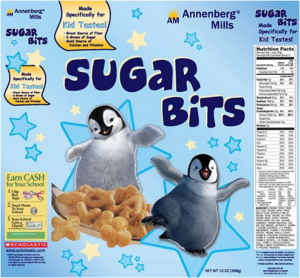While I’m on the subject of the FTC (see yesterday’s post), let’s congratulate the agency for going after the Nestlé (no relation) corporation for marketing a product aimed at kids with misleading, deceptive, and—according to the FDA—illegal health claims. The FTC settlement announcement says that
from fall 2008 to fall 2009, Nestlé HealthCare Nutrition, Inc. made deceptive claims in television, magazine, and print ads that BOOST Kid Essentials prevents upper respiratory tract infections in children, protects against colds and flu by strengthening the immune system, and reduces absences from daycare or school due to illness.
Nestlé must have introduced this product in 2008 because bloggers (of the sponsored kind) were promoting its benefits in September that year. One said:
BOOST Kid Essentials is a nutritionally complete drink intended for children ages 1 to 13. The probiotics in BOOST Kid Essentials are embedded in a straw that comes with the drink, which was prominently featured in ads for the product. Probiotics are live, beneficial bacteria that are found naturally in many foods, and they are known for aiding digestion and fighting harmful bacteria.
This blogger’s enthusiasm for the product—“parenting solved”—quotes two studies, one done with adults using the straw and another with kids in day care whose infant formula was supplemented with one of the bacteria used in the adult study. Both studies look preliminary to me, as they must have to the FTC.
In February 2009, in what reads like a company advertisement, another (sponsored) blogger wrote:
BOOST Kid Essentials Drink is the only nutritionally complete drink that provides kids ages 1 through 13 with immune-strengthening probiotics plus complete, balanced nutrition. Just one daily serving of the probiotic found in the BOOST Kid Essentials Drink straw has been clinically shown to help strengthen the immune system. BOOST Kid Essentials Drink is perfect for children who are below growth percentiles, having trouble gaining weight, resisting eating enough nutritious foods, or needing extra nutrition to help maintain an active lifestyle.
But in December 2009, the FDA issued a letter to the company warning it that it was marketing this product as a drug:
this product is misbranded under…the Federal Food, Drug, and Cosmetic Act… because the label is false or misleading in that the product is labeled and marketed as a medical food but does not meet the statutory definition of a medical food in the Orphan Drug Act…Furthermore, this product is promoted for conditions that cause it to be a drug under section 201(g)(1)(B) of the Act…The therapeutic claims on your website establish that this product is a drug because it is intended for use in the cure, mitigation, treatment, or prevention of disease.
The warning letter didn’t get into the business of whether probiotics really do any good (the European Food Safety Authority certainly doesn’t think so) or whether “healthy” bacteria stay live and active in a straw stuck in the packaging of a kids’ drink. The company must not have wanted to get into all that, so it settled. The probiotic straw no longer comes with the package.
Nestlé is the largest food company in the world with earnings that exceed $100 billion annually. It should have known better.
Update, July 15: Since the FTC imposed no penalties on Nestlé, analysts expect class action lawsuits to follow in due course. And here’s the account in the New York Times (I’m quoted).




